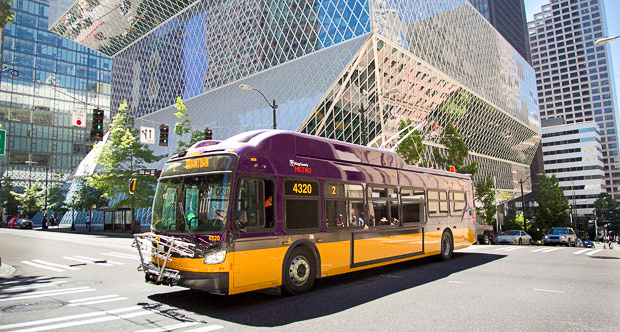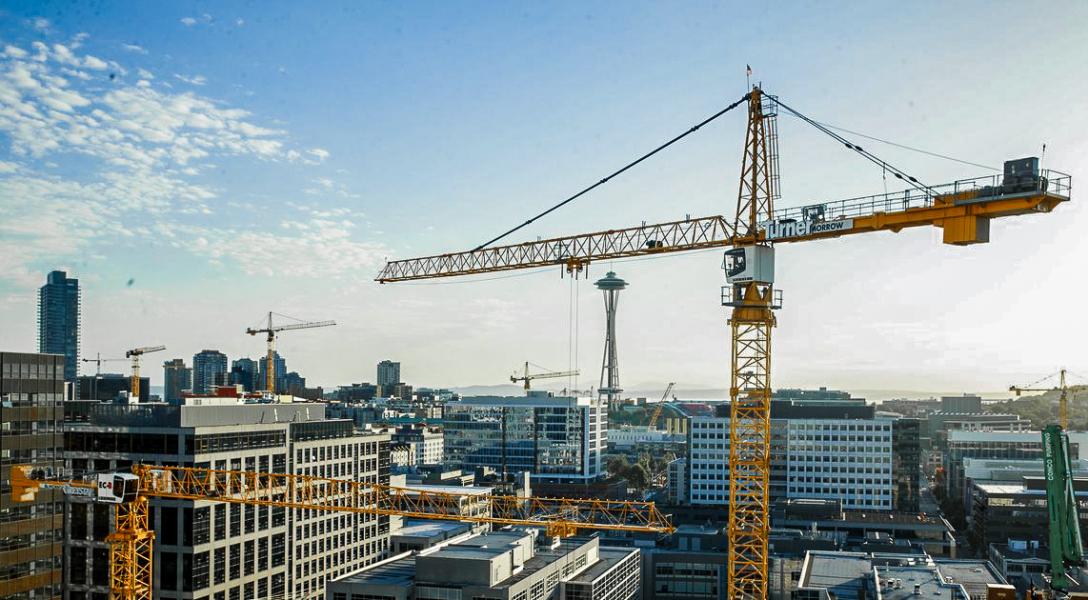Climate change and the rising cost of living are two of the most daunting and urgent challenges facing our region.
Scientists agree that without immediate and drastic action, communities around the world could be devastated by climate-driven famines, storms, heat waves, and draughts by 2050, and maybe much sooner. Closer to home, thousands of our friends and neighbors in the Puget Sound region have struggled to make rent or been left homeless by a devastating combination of stagnant wages and skyrocketing housing costs.
The good news is that we can begin to address both the cost of living and climate change with one solution: building more affordable homes in dense urban areas with good transit.
Washington’s single biggest source of greenhouse gas emissions is transportation. In fact, more than 20 percent of our local carbon pollution comes from gas-powered cars and trucks. But a family that lives in the core of an urban area has half the carbon footprint of a similar family living in an isolated suburb. The biggest reason is that people who live in urban areas can walk, bike, or take transit more easily and leave their car at home, if they have one at all.

More people than ever want to live in urban areas close to work as well as the restaurants and activities they love. The bad news is that rising housing prices have forced people many who work in urban areas like Seattle to look far into the suburbs for an affordable place to live. This shift has strained our under-funded suburban and rural transit service (where it’s available at all), which has pushed more people back into their cars to avoid hour-long commutes on standing room only buses. The result is longer commutes and more carbon pollution, even among those who are committed to reducing their carbon footprint.
While the Puget Sound region has added thousands of new jobs every year, the number of affordable homes has not grown at the same pace. Recently, a Seattle City Council committee supported a proposal to allow more backyard cottages, also known as Accessory Dwelling Units (ADUs), in residential neighborhoods. This is a great, low-impact way to increase the number of affordable homes for family members or renters. However, as we discussed in our recent blog post, we need to do much more to ensure that everyone has a home that’s healthy and safe that they can afford.
In order to address climate change and housing affordability we must make it possible for people to live and work in the same neighborhood, even if they don't work at a big tech company. That’s going to require a combination of fundamental changes to our city’s zoning laws and significant new public investments in housing and transit.
Simple arithmetic reveals that we’re unlikely to address the our region’s climate and affordability crises while 75 percent of Seattle’s residential land is zoned for only single family use. A handful of neighborhoods have absorbed the vast majority of the city’s rapid population growth, but that squeeze has driven up the cost of land – and rents – in those few areas. If you can’t afford to live in one of the shiny new buildings in Capitol Hill or South Lake Union, you’re probably going to be stuck with a long commute from an outlying area with worse transit options.
The reality is that we must allow varying levels of increased density and development in more neighborhoods in Seattle and King County. Before all the single-family owners get upset, this doesn’t mean we need skyscrapers in Maple Leaf. Simply allowing duplexes and triplexes can more than double the housing capacity of a neighborhood without turning it into South Lake Union. In areas around transit hubs, we need to build upon the council’s recent upzoning legislation to find more areas where we can build even taller. This will allow people to drive less or go carless entirely – helping reduce traffic, pollution, and parking needs all at the same time.
All of these solutions will also help our region achieve its green aspirations. Mayor Jenny Durkan recently said that “To meet our climate goals, we have to reduce the number of vehicle miles traveled,” and making it possible for people to live close to work is one of the biggest and easiest ways to reduce those miles. However, we can’t rely entirely on the private sector to make this happen. Seattle, King County, and other municipalities have no choice but to fund substantially more housing. This includes both permanent supportive housing for people experiencing homelessness and housing that’s accessible to people in the “missing middle” - working families who can’t afford market rate rent. It also includes more funding for rapid, reliable transit so that people don’t need to drive everywhere in order to live and work in Seattle.
We’re going to need substantially more revenue to meet the scale of our region’s housing and climate challenges. We’ve heard a variety of good ideas from candidates running for office this year. From a progressive real estate excise tax to a vacancy tax to prevent real estate speculation, we’re looking forward to working with the next city and county council to ensure the solutions are ambitious enough to match the challenges we face.
Our region’s natural beauty and vibrant public lands are part of what makes this an amazing place to live. We must act now to address our housing crisis in order to preserve our natural environment for future generations and ensure they can afford to live here and enjoy it.
Isabel Gibson Penrose is the Political Communications Specialist at Fuse Washington.

